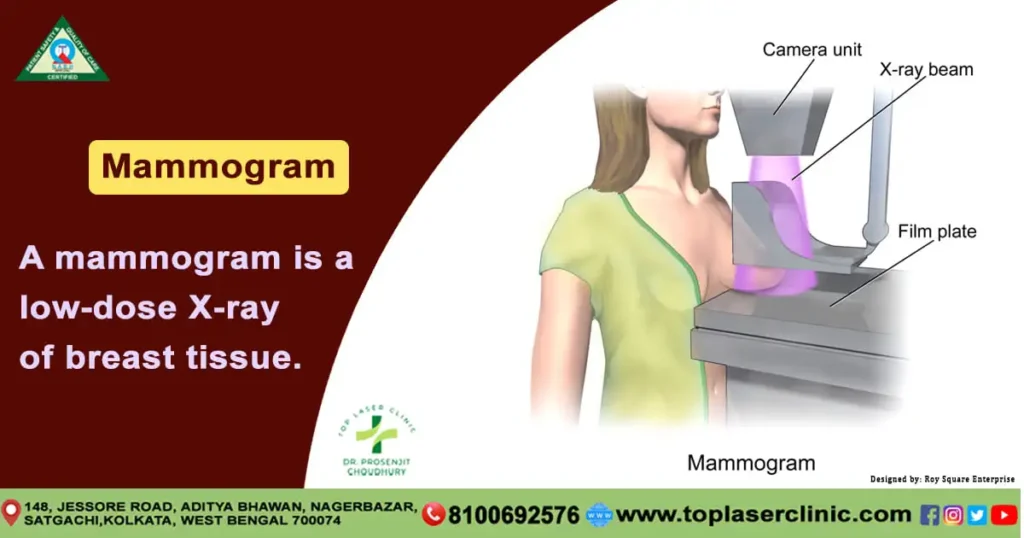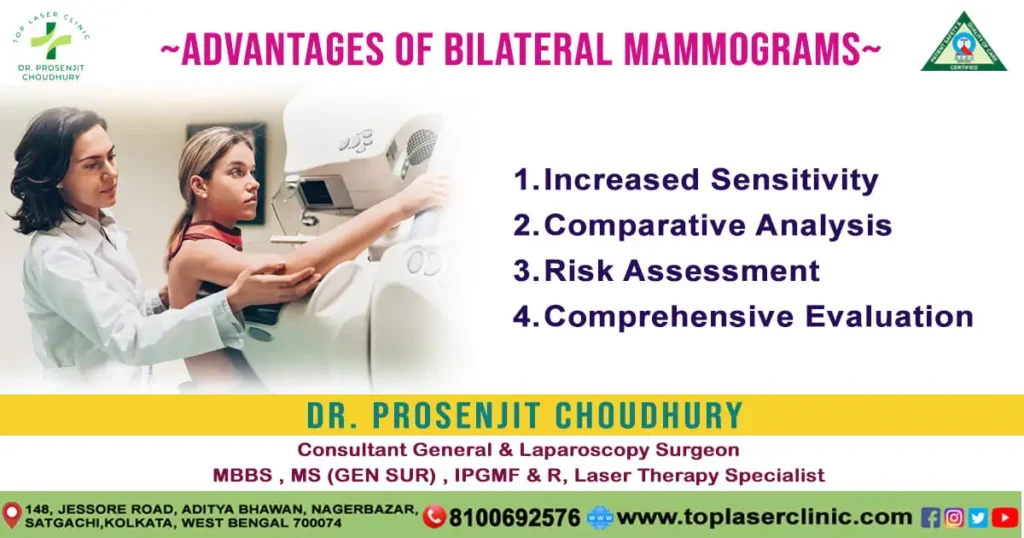
Mammogram
In the realm of women’s health, the mammogram stands out as a crucial diagnostic tool, playing a pivotal role in early detection and prevention of breast cancer. This non-invasive screening procedure has been a cornerstone in the fight against breast cancer, saving lives and empowering women to take charge of their well-being. In this blog post, we’ll delve into the significance of mammograms, shedding light on their importance, procedure, and the conception that do mammograms hurt and the impact they have on women’s health.
The Importance of Mammograms:
Mammograms are specialized X-ray examinations designed to capture detailed images of the breast tissue. The primary purpose is to identify any abnormalities, such as lumps or masses, that may be indicative of breast cancer. Early detection through mammography significantly improves the chances of successful treatment, underlining the importance of regular screenings, particularly for women aged 40 and above.
Early Stage Breast Cancer Detection:
One of the key benefits of mammograms is their ability to detect breast cancer at an early stage, often before symptoms manifest. Early detection allows for prompt intervention, increasing the range of treatment options available and improving the likelihood of a positive outcome. By identifying abnormalities when they are still small and localized, mammograms contribute to more effective and less invasive treatment strategies.
The Mammogram Procedure:
Understanding the mammogram procedure can alleviate concerns and encourage women to prioritize regular screenings. During a mammogram, the breast is gently compressed between two plates of the mammography machine. While this compression may cause temporary discomfort, it is essential for obtaining clear and detailed images. The entire process is relatively quick, typically lasting around 20 minutes, and the discomfort is brief compared to the potential benefits of early cancer detection.
Types of Mammogram:

Understanding the various types of mammograms available can empower individuals to make informed decisions about their breast health. In this blog post, we’ll explore the different types of mammograms and do mammograms hurt, shedding light on their purposes, procedures, and benefits.
Screening Mammograms: The Foundation of Prevention
- Purpose: Designed for women without any breast cancer symptoms, screening mammograms aim to detect cancer in its early stages when treatment is most effective.
- Procedure: Patients stand in front of an X-ray machine, and each breast is compressed for a few seconds to capture detailed images.
- Benefits: Early detection and increased chances of successful treatment.
Diagnostic Mammograms: Investigating Suspicious Findings
- Purpose: Conducted when a patient exhibits symptoms like a lump, pain, or discharge, diagnostic mammograms provide a closer look to identify the cause.
- Procedure: Similar to screening mammograms but with additional views for a more in-depth analysis.
- Benefits: Pinpointing the nature of abnormalities for accurate diagnosis.
3D Mammography (Tomosynthesis): Revolutionizing Detection
- Purpose: Offers a three-dimensional view of the breast, reducing the likelihood of false positives and improving cancer detection rates.
- Procedure: Similar to traditional mammograms but captures multiple images at different angles.
- Benefits: Enhanced clarity, especially in dense breast tissue, and reduced callback rates.
Digital Mammography: Advancing Image Quality
- Purpose: Utilizes digital technology for image capture and storage, providing clearer images and facilitating easier sharing with healthcare providers.
- Procedure: Similar to traditional mammograms but with digital receptors instead of X-ray film.
- Benefits: Improved image quality, quicker results, and the ability to manipulate images for better analysis.
Contrast-Enhanced Mammography (CEM): Spotlighting Abnormalities
- Purpose: Involves the injection of a contrast agent to highlight blood flow in the breast, aiding in the detection of lesions that may not be visible on standard mammograms.
- Procedure: Combined with a standard mammogram, the contrast agent enhances the visibility of abnormalities.
- Benefits: Improved detection of abnormalities, especially in high-risk patients.
Frequency of Mammograms:
The frequency of mammograms depends on various factors, including age, family history, and individual risk factors. Generally, women are encouraged to begin regular mammograms at the age of 40 and continue to do so annually or biennially. For those with a higher risk of breast cancer, healthcare providers may recommend more frequent screenings or additional imaging techniques.
Bilateral Mammogram:
Bilateral mammograms involve the imaging of both breasts, capturing detailed X-ray images to identify any abnormalities or potential signs of breast cancer. Unlike unilateral mammograms, which focus on a single breast, bilateral mammograms provide a more complete picture of the breast tissue. This comprehensive approach enhances the accuracy of detecting abnormalities, ensuring a more thorough assessment of breast health.
The Procedure:
The process of undergoing a bilateral mammogram is similar to a unilateral mammogram. The patient stands in front of the mammography machine, and each breast is compressed between two plates to obtain high-quality images. While the compression might be momentarily uncomfortable, it is necessary to ensure optimal image clarity. The entire procedure typically takes around 20 to 30 minutes and is a relatively routine and non-invasive examination.
Advantages of Bilateral Mammograms:

- Increased Sensitivity: Bilateral mammograms have a higher sensitivity for detecting breast abnormalities compared to unilateral mammograms. This is crucial for early detection and prompt intervention.
- Comparative Analysis: With images from both breasts available, radiologists can make more accurate comparisons, distinguishing between normal variations and potential abnormalities.
- Risk Assessment: Bilateral mammograms aid in assessing the overall risk of breast cancer, especially for individuals with a family history or other risk factors.This information can guide personalized screening and prevention strategiesStrategies for preventive and customised screening can be informed by this data..
- Comprehensive Evaluation: As breast tissue varies, having a bilateral view ensures a more comprehensive evaluation of the entire breast anatomy, including the axillary region.
Bilateral mammograms are a vital tool in the early detection of breast cancer, offering a more thorough examination and increasing the chances of identifying abnormalities at their earliest, most treatable stages. Regular screenings, along with maintaining open communication with healthcare providers, empower individuals in taking charge of their breast health. Remember, early detection saves lives, and bilateral mammograms are a significant step forward in this ongoing battle against breast cancer.
Empowering Women Through Knowledge:
Knowledge is a powerful tool in the realm of health, and understanding the significance of mammograms empowers women to take control of their breast health. By prioritizing regular screenings and embracing early detection, women can actively contribute to their overall well-being and play a proactive role in the prevention and management of breast cancer.
Do mammograms hurt:
Despite their life-saving potential, many women are hesitant to undergo this screening due to concerns about discomfort or pain. In this blog post that do mammograms hurt, we aim to debunk the myth surrounding mammograms and explore the reality of the experience that do mammograms hurt.
Body:
- Understanding the Importance of Mammograms: Begin by emphasizing the importance of mammograms in detecting breast cancer at its earliest, most treatable stage. Highlight statistics and success stories to reinforce the life-saving impact of regular screenings.
- Setting Realistic Expectations: Acknowledge that every woman’s experience may vary, but it’s crucial to set realistic expectations. Most women report minor discomfort rather than significant pain during the procedure. Educate readers on the purpose of compression during mammograms and how it aids in obtaining clearer images.
- The Mammogram Process: Break down the mammogram process step by step, from check-in to the actual imaging. Explain how the compression of the breast is brief and necessary for accurate results. Emphasize that the discomfort lasts only for a few seconds during each compression.
- Tips for a Comfortable Experience: Provide practical tips for minimizing discomfort during a mammogram. This may include scheduling the appointment at a specific time of the menstrual cycle when breasts are less tender, using relaxation techniques, or taking over-the-counter pain relievers before the procedure.
- Patient Testimonials: Share positive experiences from women who have undergone mammograms. Include stories of early cancer detection and successful treatments that resulted from routine screenings. Real-life testimonials can help alleviate fears and inspire confidence in the screening process.
- Addressing Common Concerns: Acknowledge specific concerns that women may have, such as fear of radiation exposure or anxiety about receiving abnormal results. Provide factual information to dispel myths and ease these worries.
- Alternative Screening Options: Discuss alternative breast cancer screening methods for women who may have a particularly low pain tolerance or other medical considerations. Highlight the importance of consulting with healthcare professionals to determine the most suitable screening approach.
In conclusion, emphasize that the potential discomfort associated with mammograms should not deter women from undergoing this critical screening. The benefits of early detection far outweigh the momentary discomfort, and with proper knowledge and preparation, women can approach mammograms with confidence and a commitment to their long-term health.
In the journey towards optimal health, mammograms stand as a beacon of hope and empowerment. As a widely accessible and effective tool, they enable early detection, fostering positive outcomes in the battle against breast cancer. By embracing regular mammograms, women not only prioritize their health but also contribute to a collective effort to reduce the impact of breast cancer on individuals and communities alike. Remember, early detection saves lives, making mammograms an invaluable ally in the pursuit of a healthier and happier future.
Remember to encourage readers to consult with their healthcare providers if they have specific concerns or questions about mammograms tailored to their individual health needs.